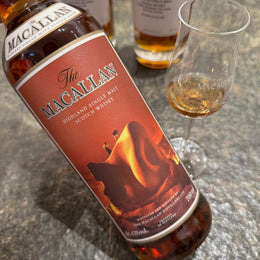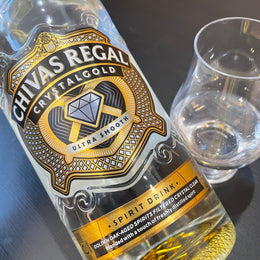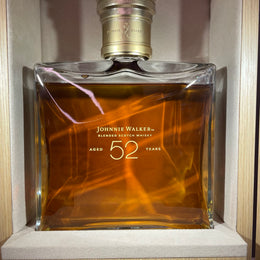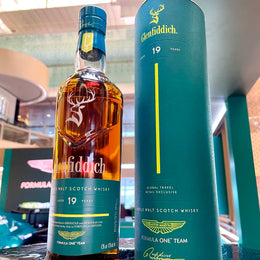
Octomore is a core cornerstone of the whisky literature - after all, a major part of the Scotch story is peat, which till this day sets it apart from whiskies from anywhere else in the world (distilleries anywhere else in the world typically don't have access to sufficient local peat bogs). It's singular focus on peat is not only ingenious but allows it to command a real fanbase of its own, whom strangely enough may not necessarily be fans of its parent distillery, Bruichladdich. It's almost as if Octomore has a persona of its own!
So let's get into it.


Cutting peat bricks!
Peat for all simplicity's sake takes the appearance of mud/soil/earth, but is set apart for being densely packed with decomposed organic material, which frankly doesn't sound all that great, but really just means dead vegetation from ages ago. Materially what this means is that it can be used as fuel by burning, which itself emits smoke that imbues the barley with a smokiness when the barley is cooked in a kiln using peat. What's interesting is that the peat itself can vary in what other flavours it imbues the barley and therefore the resulting whisky.
Peat from the coastal Scottish island of Islay is usually composed of sea vegetation, shellfish and oysters and therefore produces whiskies that are more medicinal (like seaweed), briny, lemon-y and chalky. Whereas peat from the Scottish highlands tends to be composed of fields of highland shrubs and flowers and therefore produces whiskies that are more herbaceous, earthy and herbal.

Peat from Scotland's Islay tends to give more medicinal, seaweed-y, coastal flavours. (Image Source: Whisky Cast)
Many often claim that peat is really what makes Scotch unique because peated whiskies are so closely associated with being of Scotch origin - and fair enough, most distilleries elsewhere in the world either use already peated barley (barley that's already cooked over burning peat) from Scotland or mature their whiskies in barrels that once held peated Scotch whisky. The reality is, most folks think that no one does peated whiskies quite like the Scots!
And so back to Octomore - this is one of three brands of whiskies produced by Bruichladdich on the coastal Islay (which refers to "island"), which includes the unpeated Bruichladdich, the peated Port Charlotte, and the mega peated Octomore. Octomore is designed to consistently be the most heavily peated Scotch produced with peat levels ranging from 80.5 PPM to 208 PPM (consider an average "heavily peated" whisky would sport a 30 - 50 PPM), "PPM" being phenol parts per million in reference to a shorthand for measuring how much peat is influencing the whisky. So yes, it is incredibly peaty.

Bruichladdich Distillery. (Image Source: Gentologie)
And you'd think therefore all you could taste was just ash and soot, but alas that's hardly been the case. In an incredible demonstration of its prowess, Bruichladdich is able to imbue the whisky with peat despite letting it become overrun! In fact, Octomore is so beloved because it's able to eke out the nuances of the peat's flavour aside from the smokiness. While it started out initially focusing heavily on its peat, it has since evolved to expand its range of influences to include local barley and the use of various wine casks the likes of Petrus. The whisky itself is kept typically at an average age of 5 years old, and as is Bruichladdich signature, you'll find a ton of information about the whisky adorning its bottle - which itself is rather unique.
What might surprise some folks - including Octomore fans, is that the brand takes its name from a nearby hillside farm just above the Port Charlotte village (you can see where that name came from), which was once a family run distillery in the 1810's! The Montgomery family were farmers who had wanted to turn their Octomore farm's barley into more valuable whisky and thus ran a distillery all the way up till the 1850's. Thereafter, distillation stopped, and it wasn't till 2002, when Mark Reynier, who revived the Bruichladdich distillery, had sought to create an extreme contrast to the otherwise unpeated Bruichladdich, and thus the Octomore was born. After all, an Islay distillery ought to have a peated whisky, for it is the style the island is most known for!

Octomore Farm.
Since its debut in 2008, the brand has grown in recognition and love from the fans and thus has become an annual series. Today we get to try the Octomore 14.3 - the 3rd of the 14th annual release, sporting a PPM of a whopping 214.2 PPM! It also makes use of hyper local barley grown at the heritage Octomore farm, and for its maturation, we're told that it was matured in a combination of first-fill ex-American whiskey casks and also second-fill wine casks.
Let's get to it!
PS. Big shoutout to Yixian (of The Single Cask Singapore) repping Bruichladdich for sharing this with us! Always spoiling us with great whiskies.
Bruichladdich Octomore Edition 14.3 / 214.2 PPM - Review

Tasting Notes
Aroma: Lots of honey, light stone fruits of apricots, lemon sherbet, backed up by grill smoke, light sea mist, with some seemingly far away notes of burnt moss.
Taste: An immediate wash of vegetal, mossy and kombu notes, very punchy and bold, mixed with light sweet syrup, very buttery texture. There’s some grilled lemons, more earthy burnt moss, wet wood, wet concrete, smoked dried fish, oyster liquor, light iodine - very coastal. It’s quite savoury, vegetal, earthy and umami.
Finish: More buttery notes, smoked butter, a sort of cream sweetness. Lingering vegetal mossy notes.

My Thoughts
This was very mossy for me which leans strongly toward it being an earthy vegetal profile, which I found very interesting and enjoyable, versus the more common medicinal or bitter flavours that tends to come with Islay peat. Together with the earthy, vegetal notes were tightly bundled savoury and umami notes too - all throughout it really struck me as syrupy and buttery in texture, something like corn syrup, but really coastal in profile - think fishing piers on a wet, rainy evening.
To that end the flavours were not only very evocative but also really bold and forward, yet just shy of being overpowering, and while the flavours felt like they were coming at you (versus just sitting with you) like you were watching a ship go by, it never felt out of balance, incohesive or disjointed. It was well layered, with a great texture and full body that delivered these big flavours really well.
Very impressed!
Kanpai!

@111hotpot







